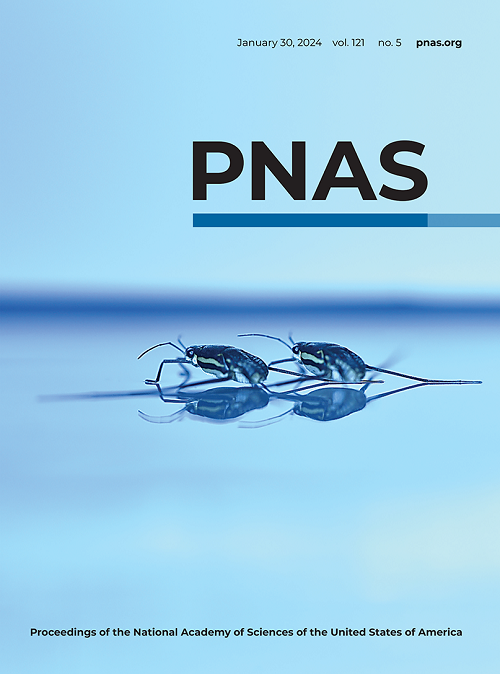Molecular basis of Spns1-mediated lysophospholipid transport from the lysosome
IF 9.4
1区 综合性期刊
Q1 MULTIDISCIPLINARY SCIENCES
Proceedings of the National Academy of Sciences of the United States of America
Pub Date : 2024-12-31
DOI:10.1073/pnas.2409596121
引用次数: 0
Abstract
Spns1 mediates the rate-limiting efflux of lysophospholipids from the lysosome to the cytosol. Deficiency of Spns1 is associated with embryonic senescence, as well as liver and skeletal muscle atrophy in animal models. However, the mechanisms by which Spns1 transports lysophospholipid and proton sensing remain unclear. Here, we present a cryogenic electron microscopy structure of human Spns1 in lysophosphatidylcholine (LPC)-bound lumen-facing conformation. Notably, LPC snugly binds within the luminal-open cavity, where the molecular dynamics simulations reveal that LPC presents a propensity to enter between transmembrane-helices (TM) 5 and 8. Structural comparisons and cell-based transport assays uncover several pivotal residues at TM 5/8 that orchestrate the transport cycle, which are unique to Spns1. Furthermore, we identify a five-residue network that is crucial for proton-sensing by Spns1. Transference of these network residues to Spns2, a sphingosine-1-phosphate uniporter, causes the chimeric Spns2 to be low pH dependent. Our results reveal molecular insights into lysosomal LPC transport and the proton-sensing mechanism by Spns1.spns1介导溶酶体溶血磷脂转运的分子基础
Spns1介导溶血磷脂从溶酶体向胞浆的限速外排。在动物模型中,Spns1缺失与胚胎衰老以及肝脏和骨骼肌萎缩有关。然而,Spns1转运溶血磷脂和质子感应的机制尚不清楚。在这里,我们展示了人类Spns1在溶血磷脂酰胆碱(LPC)结合的面向管腔构象中的低温电镜结构。值得注意的是,LPC在光开腔内紧密结合,分子动力学模拟显示LPC倾向于进入跨膜螺旋(TM) 5和8之间。结构比较和基于细胞的转运分析揭示了Spns1独有的几个在TM 5/8上协调转运周期的关键残基。此外,我们确定了一个对Spns1的质子感应至关重要的五残基网络。这些网络残基转移到Spns2上,Spns2是鞘氨醇-1-磷酸的单转运体,导致嵌合的Spns2具有低pH依赖性。我们的研究结果揭示了溶酶体LPC转运和Spns1的质子感应机制的分子见解。
本文章由计算机程序翻译,如有差异,请以英文原文为准。
求助全文
约1分钟内获得全文
求助全文
来源期刊
CiteScore
19.00
自引率
0.90%
发文量
3575
审稿时长
2.5 months
期刊介绍:
The Proceedings of the National Academy of Sciences (PNAS), a peer-reviewed journal of the National Academy of Sciences (NAS), serves as an authoritative source for high-impact, original research across the biological, physical, and social sciences. With a global scope, the journal welcomes submissions from researchers worldwide, making it an inclusive platform for advancing scientific knowledge.

 求助内容:
求助内容: 应助结果提醒方式:
应助结果提醒方式:


